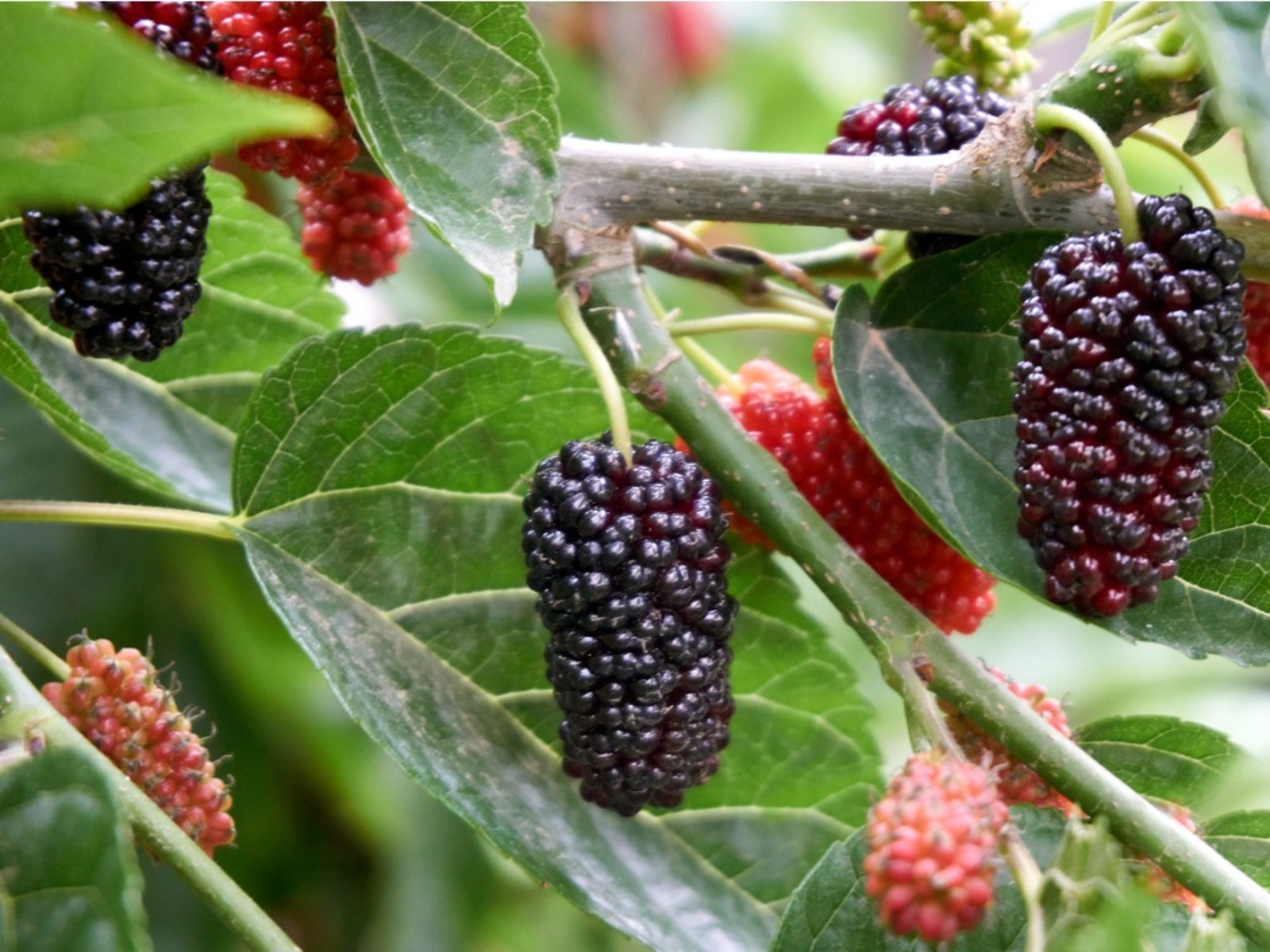
Mulberry Tree
Morus spp.
Basic Information
🌿 Family: Moraceae🗺️ Zone: 4-10
Other Names:
- White Mulberry (Morus alba)
- Red Mulberry (Morus rubra)
- Black Mulberry (Morus nigra)
🌡️ Ideal Temperature : 55°F – 85°F
🔥 Heat Tolerance: Up to 110°F
❄️ Cold Tolerance: Down to -25°F
🌱 Type: Perennial
Layers
- Tree
Functions
- Edible
- Medicinal
- Wildlife Attractor
- Mulcher
- Dynamic Accumulator
- Erosion Control
- Animal Fodder
- Windbreaker
- Border Plant
Pests
No pests associated with this plant.
Description
Mulberry trees (Morus spp.) are fast-growing deciduous trees known for their sweet, nutritious berries and their ability to thrive in various climates. They produce an abundance of fruit, which is enjoyed fresh, dried, or made into jams and wines. The trees have deep roots, making them resilient to drought conditions and suitable for erosion control.
The leaves of some species, particularly Morus alba, are a primary food source for silkworms. Mulberries attract pollinators and wildlife, making them an excellent addition to food forests and permaculture designs.
🌞💧 Sun and Water Requirements:
- Prefers full sun but tolerates partial shade.
- Requires moderate to low watering; drought-tolerant once established.
- Adaptable to different soil types but thrives in well-draining, loamy soil.
✂️🫘 Methods to Propagate:
- Seeds: Requires cold stratification before planting.
- Cuttings: Can be propagated using softwood or hardwood cuttings.
- Grafting: Often grafted onto rootstock for improved growth.
🧑🌾👩🌾 When to Harvest:
- Berries ripen in late spring to early summer.
- Fruit is ready when it turns deep red, purple, or black, depending on the variety.
- Harvest by gently shaking the branches; ripe berries fall easily.
Purpose
The mulberry tree serves multiple functions in a permaculture system:
- Edible: Produces sweet, nutrient-rich berries.
- Medicinal: Traditionally used for anti-inflammatory and antioxidant properties.
- Wildlife Attractor: Berries attract birds, bees, and beneficial insects.
- Mulcher: Leaves and pruned branches can be used as mulch.
- Dynamic Accumulator: Draws up nutrients and improves soil health.
- Erosion Control: Deep root system stabilizes soil and prevents erosion.
- Animal Fodder: Leaves and fruit provide nutritious feed for livestock.
- Windbreaker: Serves as a natural wind barrier in agroforestry systems.
- Border Plant: Functions as a hedge or boundary tree in diverse landscapes.